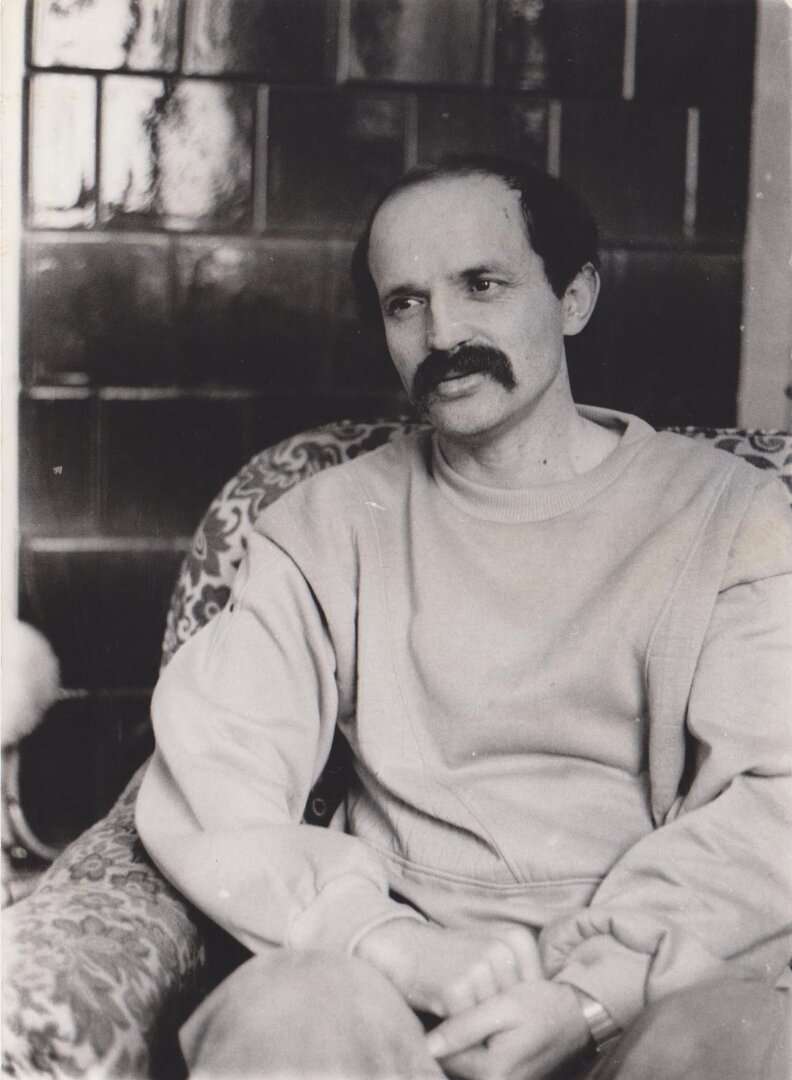The stories of József Holdosi (1951–2005) are set in a clearly definable reality, that of the street. Although this is, so to speak, a rather fuzzy metaphor, it provides the ontological setting for almost all of Holdosi’s novels.
József Holdosi’s Novels

József Holdosi. By Julia Holdosi, rights granted
Rights held by: Dániel Holdosi | Licensed by: Dániel Holdosi | Licensed under: CC-BY-NC-ND 4.0 International | Provided by: Dániel Holdosi – Private ArchiveHis first novel, titled Kányák (a family name, lit. The Kányas), tells the story of three generations of the Kánya family. Originally published in 1978, it appeared in German-speaking countries in 1984 under the title Die Straße der Zigeuner [lit. The Gypsy Street]. As the German title already indicates, the translation shifted the semantic emphasis of the novel to the social or sociological question: ‘How do and did “Gypsy people” live in Hungary?’ The translation is shaped by a number of specific reference points of the novel, so that the myths, the transcendentalism, the plot and the characters come across as colourful illustrations of the exotic rather than as social reality.
Such an understanding of the novel as a representation of reality was manifested not least in the fact that some members of Holdosi’s family thought they recognised themselves in the novel’s characters and took him court. Holdosi used this experience as material for his radio play Hajh, cigányok, hajh, Kányák (Ho, Gypsies, ho, Kányas). The characters in the play are the author as defendant, while the plaintiffs are the members of his family, the putative Kányas.
The German translation by Peter Scharfe was republished in 2014, after its rediscovery by Beate Eder-Jordan already at the end of the 1980s. The new title of the book is based on the main symbol of the novel, the crowned snakes: Die gekrönten Schlangen. It received very positive from literary critics.
József Holdosi, Die gekrönten Schlangen, Novel. Permalink.

The main protagonists of Holdosi’s novels (such as Kányák, Cigánymózes, Glóriás and Dac) are almost all active characters whose narrative perspective defines the text in key ways. This aspect is associated with a reaching out from the personal sphere towards the community. This narrative stance creates a cognitive horizon in which images become allegories – symbols in which the traditional relationship between signifier and signified dissolves. Thus, the bridge, the palisade and the well are transformed into an allegorical Holy Trinity and become neuralgic points between the village and the ‘Gypsy street’, between this world and the underworld, between Roma and peasants.
Rights held by: Zoltán Beck | Licensed by: Zoltán Beck | Licensed under: CC-BY-NC 3.0 Germany | Provided by: RomArchive



